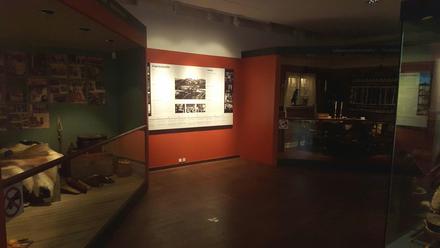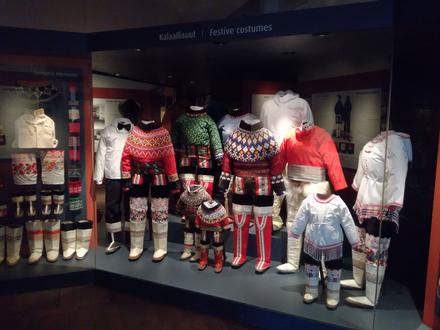

Lifestyle and class distinctions
The exhibition Lifestyle and class distinctions focuses on the daily life of Greenlanders during colonisation through the themes of class and ethnic divides and the ways these played out in everyday life and society as a whole. The exhibition provides a close look at Greenlandic national dress for men and women from east, west and north Greenland. The advent of Christianity in 1721 and colonisation of the west coast of Greenland from 1774 resulted in radical disruptions and changes in the mentality and lives of Inuit Greenlanders. Colonisation created new social and class divides. Ethnic hierarchies were introduced with the arrival of the colonists – a master race and upper class that ruled and administered Greenlanders, who were confined to seal hunting to provide raw materials for colonially monopolised export. Most mixed-race Greenlanders formed a middle class employed by Royal Greenlandic Trading and the missionaries.
In fields like boat and house building, administration and navigation imported materials and the introduction of new techniques created increasing dependency on foreign materials and know-how. The introduction of new diseases also required Western forms of treatment and external expertise. Very few of the new initiatives were accompanied by any kind of formal training for Greenlanders as midwives, catechists, carpenters, coopers, etc.
See the difference between a typical Greenlandic and Danish home in 1950s Greenland and how traditional clothing changed with colonisation. You can also learn more about the impact foreign people coming to Greenland had on health and disease in the country.